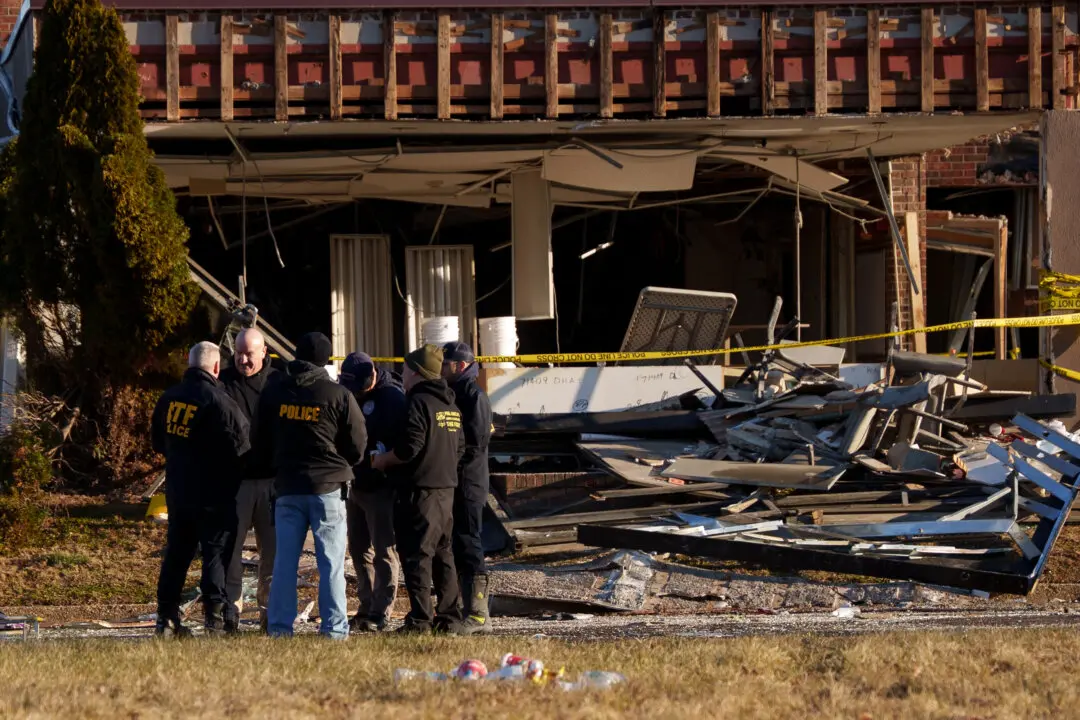WASHINGTON—In measuring progress in the American-led air war against the Islamic State (ISIS) in Syria and Iraq, numbers tell one story but results tell another.
Fighter jets, bombers, attack planes and drones are dropping an average of 2,228 bombs per month on targets ranging from training camps and machine gun positions to oil facilities and weapons shacks. The Pentagon says it doesn’t do body counts, but the attacks are believed to have killed upward of 20,000 ISIS fighters. The U.S. price tag: $5 billion since August 2014, an average of $11.1 million each day.
The bombing has damaged or destroyed hundreds of military vehicles (including American tanks surrendered by Iraqi soldiers), thousands of buildings, hundreds of pieces of oil infrastructure and thousands of fighting positions, among other targets, according to U.S. Central Command figures.
This sounds like a pummeling designed to bury an enemy, particularly one facing the military might and technological power of the United States.
[aolvideo src=“http://pshared.5min.com/Scripts/PlayerSeed.js?sid=1759&width=580&height=356&playList=519259223&responsive=false&pgType=console&pgTypeId=discovery-videoDetails-grabCodeBtn”]
But what has been the result? In a word, stalemate, although U.S. military officials say they see the tide gradually turning in their favor.
The key word is “gradually.” The administration has said from the start that dealing a lasting defeat to ISIS will take years, that a pell-mell military approach will not work because ISIS is not a conventional army. But in the aftermath of the Paris terrorist attacks many are asking why the U.S. is not in a bigger hurry.
President Barack Obama says he sees encouraging progress. On Monday he pointed to the liberation this month of Sinjar in northwestern Iraq by Iraqi Kurdish forces, the encirclement of ISIS-held Ramadi and the severing of a key highway serving as a supply route for Islamic State fighters between the northern Iraqi city of Mosul and the militant’s self-proclaimed capital of Raqqa in Syria. A key Iraqi oil refinery also has been taken from the militants.
And yet, as the Paris attacks showed, the group is now acting on global ambitions. It has withstood the aerial pounding by U.S. and coalition warplanes, defended its core territories and apparently used its resiliency and social media savvy to replenish its ranks as quickly as they are reduced.
How has it managed this?
The answer lies partly in the gradualist U.S. military approach. Instead of bombing every target in sight and sending a U.S. ground invasion force, Obama has chosen to use air power more discriminately to chip away at ISIS, avoiding targets where civilians are endangered. And rather than sending U.S. ground combat troops, he is waiting for the emergence of local fighters who can do the job. The premise of this strategy, endorsed by the president’s top national security advisers but doubted by many in Congress, is that although the U.S. military is capable of squashing ISIS, any such victory would be short-lived without local armies and governments capable of maintaining stability.
[morearticles]1778264, 1776169[/morearticles]
The president’s new chief military adviser, Gen. Joseph Dunford, defends a U.S. approach focused heavily on avoiding killing civilians.
“We’re very careful in terms of civilian casualties, and some have criticized us for that,” Dunford said Tuesday. “I will not apologize for that, because we are fighting the long fight, and for us to do otherwise would be shortsighted.”
In the meantime ISIS has leveraged Iraqi and Syrian oil resources to generate nearly $1.4 million a day through black market sales. Those funds have enabled the militants to replace damaged and destroyed equipment and weapons and to finance their recruiting efforts. Critics of the administration’s approach say this is giving ISIS too much breathing room, enabling it to spread its influence well beyond Syria and Iraq.
In recent days the Pentagon has highlighted attacks on oil-related targets that it previously had passed up or struck too lightly. For example, on Sunday it used A-10 attack planes and AC-130 gunships to destroy 116 tanker trucks in eastern Syria as they lined up near an oil facility in the open desert. On Wednesday the military said it struck two oil and natural gas processing plants near Abu Kamal in eastern Syria near the Iraqi border.
A question that has not yet been fully answered by the Pentagon is why it took so long to go after more of those oil-related targets, which are links in an oil business that Col. Steve Warren, a U.S. military spokesman in Baghdad, says generates more than half of the ISIS' revenue.
For all the attention paid to the air campaign and its shortcomings, Defense Secretary Ash Carter says the key to ultimate success will be found on the ground, not in the air.
Sufficient numbers of local fighters in Iraq and Syria will have to step forward. Iraq’s Sunni Arabs, for example, need to rise up and reclaim what ISIS has taken from them, Carter said.
“This is one of the sad realities,” he said. “They’re harder to find than you would like.”
Another reality is that the Obama administration is under political attack for what critics sees as a feckless military effort.
“Thousands of airstrikes against ISIS targets have conjured the illusion of progress, but they have produced little in the way of decisive battlefield effects,” Sen. John McCain said Tuesday. The Arizona Republican favors a more aggressive U.S. approach in both Iraq and Syria.





